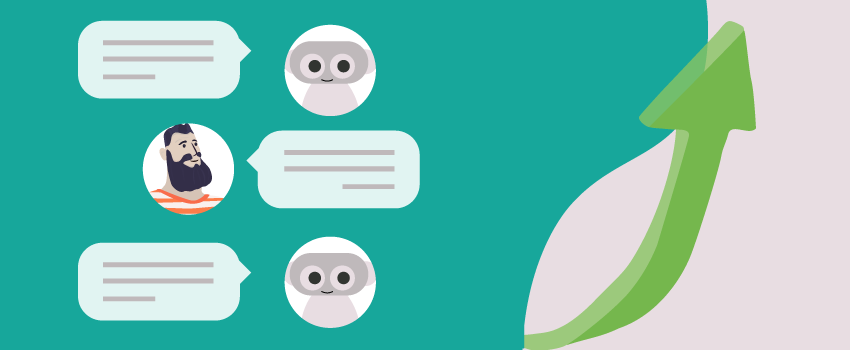
Want to Get Started with AIOps? Here’s How
AIOps is becoming “the next big thing” in the IT management world because the technology employed, and IT operations, have changed vastly over the last decade and traditional event management tools and methods no longer work as well as they did. Instead, they slow progress down, struggling to be effective against the tide of incoming data being created by the numerous monitoring tools now required to accurately monitor our complex IT estates.
Put simply, AIOps is where humans and artificial intelligence (AI) come together – within the IT management setting – to provide a more enhanced and efficient working environment. Where AIOps works to automate finding and fixing IT incidents and problems.
To learn more about what AIOps is you can read my earlier blog post, “AIOps Explained”. If you’re already on board and eager to get started with AIOps, then please carry on reading because below you’ll find four tips to help you on your way.
1) It’s all about the data
The primary capability of an AIOps tool is machine learning and for machine learning to be effective there needs to be lots of data. So, before getting started with AIOps, you need to be sure that you get to grips with your data. And, not only do you need lots of it, but you also want that data to be as clean as possible – dirty or noisy data will be distracting and will make it much tougher to train your machine learning models.
A first step should be to gather information about what data streams your organization is currently working with and then getting to work on ensuring that the data is as clean as it can be. This is no simple feat given the volumes of performance and logs data that are produced in a modern IT environment, but it’ll be worth the time and effort you invest. Because trying to get started without first understanding your data would be akin to finding your way through darkness without a flashlight – it’s not necessarily impossible but certainly far more of a struggle than it needs to be.
The data you’ll use will come from multiple sources to be grouped and analyzed together. Siloed data can be ineffective when trying to determine the root cause(s) of problems but AIOps tools can help to provide a holistic view of organizational data by bringing it all together in one place. For example, one team’s data might hold the root cause to another team’s problem but when they’re looked at in isolation it could take a huge amount of time and resource to get to the bottom of the issue (at worst the connection might never be made). AIOps enables you to see across your organization and big data analytics can help to automatically find, progress, and even resolve issues.
On board and eager to get started with #AIOps? Check out these tips. Share on X2) Choose wisely
Because AIOps has become the way-to-go for organizations that need to manage their IT environments effectively, they’re in vogue and vendors are releasing AIOps tools with varying degrees of ability and cost. This means that you’ll need to do your research in order to find the best tool for your organization’s needs – for instance, you might not need the product that offers you absolutely everything however appealing it might seem.
One of the most important things you can do at the start of your AIOps journey is to understand what’s necessary for your organization to measure and collect. If you’re measuring factors but when asked “Why is this needed?” you can’t answer straight away, then it’s likely you’re measuring too much. This can distract you from gathering the information you need to actually progress and resolve your IT issues and problems. Measuring less has the potential to make your operations far more effective because your efforts are focused on where they need to be.
3) Go slowly
The potential results and benefits that AIOps can bring to your organization are incredibly exciting and it can be tempting to jump in at the deep end. The issue with this? If there are bumps in the road, which there will inevitably be, then you’re going to have to deal with them all at once. This would be difficult and is probably the quickest way for teams to lose faith in AIOps (something you definitely don’t want to do).
Instead, you should take a more agile approach to your journey – start small, test in phases, and progressive iteratively. This will give you a chance to get to grips with your AIOps tool and what it can offer you, and any issues can be worked out and then avoided in later phases. This small and steady progression lets you resolve issues quickly, learn on the job, and allows your organization to get the most out of its new AIOps investment.
Humans and #AI working together can hugely enhance your IT processes but if the human side of the team is unhappy it might not garner the results you expect. Share on X4) Employ organizational change management
My final tip for getting started with AIOps is one that’s not mentioned enough by people talking about introducing AIOps but is of equal importance to anything else that I’ve mentioned – look after your people by employing organizational change management (OCM) tools and techniques.
The introduction of an AIOps solution is going to be a way-of-working-related change for your staff and you want to ensure that they’re on board with it. For example, some people may fear that AI is coming to take over their jobs, others will be comfortable with how things are right now and may not like the idea of learning new processes or tools, and others might have lots of questions before they’ll feel comfortable accepting the changes. Whatever their concerns, it’s ingrained in many of us to fear change and you’re highly likely to meet resistance along the way.
To help, OCM focuses on people and leading them through change, helping them to understand why the change is necessary and what’s needed of them. OCM can help your organization to break through resistance to change effectively by making employees feel heard, equipping them with the knowledge they need, and ensuring that they feel supported before, during, and after the change has been implemented.
Humans and AI working together can hugely enhance your IT processes but if the human side of the team is unhappy it might not garner the results you expect. Employ OCM to show your employees that they matter and to ensure that their voices are heard.
So, that’s my four tips for getting started with AIOps. Have you started along the AIOps road? What other tips would you give to an organization starting out? Please let me know in the comments.






